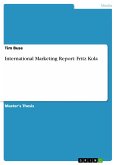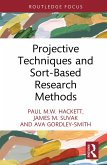Seminar paper from the year 2011 in the subject Communications - Public Relations, Advertising, Marketing, Social Media, grade: 1,3, AKAD University of Applied Sciences Stuttgart, language: English, abstract: "Conjoint analysis has become one of today's most widely used marketing research tools. It goes beyond simple surveys, providing a more realistic approach to understanding customers attitudes, opinions, and behaviors." (Orme, 2010, p. 7) The author Orme (2010, p. 7) emphasises in his book the growing popularity of conjoint analysis in marketing research. According to Orme (2010, p. 1) the consumer preferences are changing constantly with an increasing speed. Therefore many marketing managers ask themselves, how they could asses client preferences? Which product characteristics are most important to the customer and what price brings the maximum profit? From Wilcox's (2003, p. 1) point of view conjoint analysis gives answers to these most critical questions of marketing research. The conjoint analysis is a marketing research technique designed to help managers determine the value system of clients and potential customers (Wilcox, 2003, p. 1). Introduced as a fundamental measurement method by the mathematical psychologists Luce and Tukey (1964, p. 1) more than forty years ago, conjoint analysis presents combination of features in product profiles and ask people to rank or make choice among of them. Finally, the results can be used for new product design, targeting, pricing and market segmentation (Dolan, 1990, p. 1). However, there arises the question what is conjoint analysis really and why it has become so popular in contrast to other marketing research techniques? In order to answer these questions, section 2.1 defines the terms marketing and market research and outlines the contrast between them. Section 2.2 gives an overview of different preference measurement techniques before it deals with the conjoint analysis itself. Chapter 3 presents the main chapter of this assignment. At first, it gives a brief overview of the role of conjoint analysis in the marketing concept. The next two sections illustrate an exemplary conjoint analysis survey and show the usage of conjoint analysis for the design of marketing strategies. Moreover chapter 4 discusses the advantages and disadvantages of conjoint analysis. Finally chapter 5 summarizes the basic insights and gives a short perspective.
Dieser Download kann aus rechtlichen Gründen nur mit Rechnungsadresse in A, B, BG, CY, CZ, D, DK, EW, E, FIN, F, GR, HR, H, IRL, I, LT, L, LR, M, NL, PL, P, R, S, SLO, SK ausgeliefert werden.









